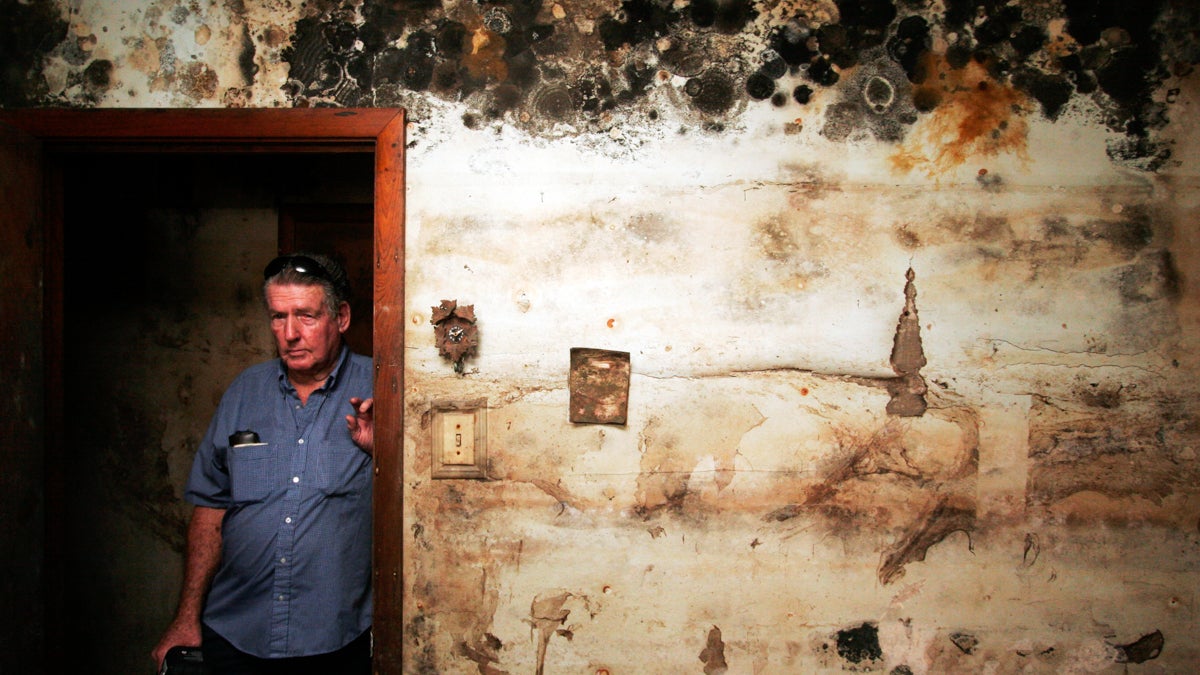Biomes of buildings: fungal geneticist investigates healthier design
Listen
Joe Middleton poses for a photograph in his still yet-to-be gutted home
If your stomach has been feeling off lately, you may try taking a probiotic or eating a new kind of yogurt to correct your gut biome. But what if you’ve started sneezing at work, or coughing in your bedroom? Fungal geneticist Joan Wennstrom Bennett says that could be due to the biome of your buildings.
“We know that people who get allergies can have acting up of their symptoms when there’s too much fungal spore. We know that there are certain conditions like legionnaire’s disease that are associated with certain bacterial populations. And then there’s a big hazy area of conditions that are rather nonspecific, often given a rather awkward title of sick building syndrome, or building-related illness.”
Bennett started investigating the biomes of built environments after Hurricane Katrina struck her home. She was forced to evacuate, and when she returned, she brought her petri dishes with her.
“There’s kind of a phrase that people in the building sciences will use flippantly: just add water,” says Bennett. “If you add water to what otherwise might be a not very rich habitat for microbes, sort of a microbial desert, it can turn into a microbial jungle, as happened to my home in New Orleans.”
Bennett now studies the biomes of built environments at Rutgers University in New Jersey. She’s also the Committee Chair of an ongoing study by the National Academies of Science, Engineering, and Medicine called “Microbiomes of the Built Environment.” Bennett, along with this team of architects and scientists, aims to discover the best building design and materials that create healthy building biomes.
She explains, “People over the millennia have designed buildings in different ways. We enclose them in different ways, we use different building materials, we bring water into these buildings in various ways, storms damage these buildings in various ways. All of these different parameters can lead to strange changes in the microbial populations within the buildings.”
While the committee continues its research, Bennett recommends common sense precautions.
“Now much of what we know is what our grandmothers told us… Keep things dry. Repair things when they get broken. Make sure your ventilation is good… and if you see microbes growing on your wall, or on the splash behind your cellar sink, that’s not a good sign. It’s time to start cleaning up and looking for the leak.”
WHYY is your source for fact-based, in-depth journalism and information. As a nonprofit organization, we rely on financial support from readers like you. Please give today.



